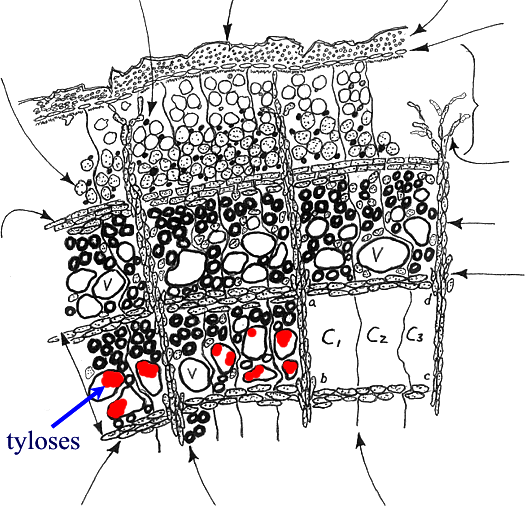Home > Tree biology > Tyloses
Tree biology
Contents: - periderm - phellem - cork cambium - phelloderm - cortex - phloem- phloem rays - sieve tube element - companion cells - cambial zone (cambium) - bark - xylem - growth ring - vessels - tyloses - parenchyma - axial parenchyma - multiserrate ray parenchyma - uniserrate ray parenchyma - fibers - symplast - apoplast - growth ring/ray compartment - wounding response - decay development
Select any of the above terms to view its location in the tree cross section. Text at bottom.

Tyloses are balloon-like swellings or projections that fill the vessels. When a tylosis is fully formed it plugs the vessel. The vessel can no longer conduct water. Tyloses form on some trees, such as white oak (see illustration above), in the growth ring formed last year. The result is that only the current growth ring conducts water; the plugged portion of the sapwood will not. Some trees, such as red maple or mahogany, conduct water in many of the outer growth increments because plugging does not normally take place in the outer increments. Durable woods usually have plugged vessels. Tyloses also form in response to wounding.

